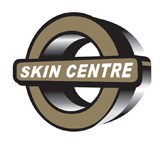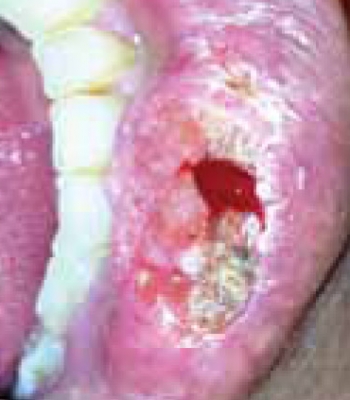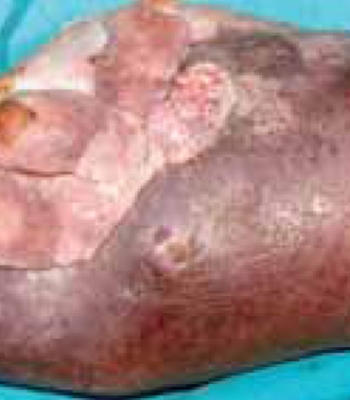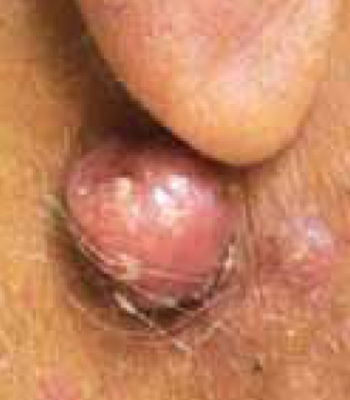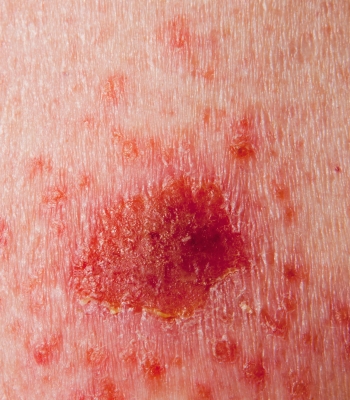NON-MELANOMA SKIN CANCER
Squamous Cell Carcinoma (SCC)
SCC is a tumour that arises on the skin and is the second most common form of skin cancer.
Who is most at risk?
SCC is most commonly caused by long-term sun exposure and is prevalent in those with light skin who sunburn easily. Risk increase with age, with those affected normally being over the age of 40. There are less common skin conditions that may cause SCC such as organ transplantation, chronic skin ulcers, prior x-ray treatment, arsenic ingestion and toxic exposure to tars and oils.
How serious is SCC?
If untreated, SCC can destroy the tissue surrounding the tumour and may result in losing a nose or ear. In aggressive cases, especially on the lips and ears, the tumour can spread to the lymph nodes and other organs resulting in death.
What does it look like?
Normally appearing as a crusted or scaly area of the skin with a red, inflamed base, SCC can also appear as a growing tumour, a non-healing ulcer. However, any skin lesions that are not healing, are growing, bleeding or changing in appearance should be evaluated. SCC’s are normally found on the face, neck, arms, scalp, ears and backs of hands. They can, however, be found anywhere on the body including the lips, inside the mouth and on genitalia. A skin biopsy for microscopic.
Treatment options
There are a number of different treatments that are used depending on location, size and microscopic characteristics of the tumour. The health of the patient and other factors, are also considered. Most options are office-based, minor procedures using local anaesthesia. Surgical excision to remove the entire cancer is most commonly chosen.
‘Mohs’ micrographic surgery, a more involved method, can be used to remove the whole tumour while sparing as much normal skin as possible. Other treatments include laser surgery, cryosurgery with liquid nitrogen, radiation therapy and electrodesiccation and curettage (ED&C).
Prevention
Sun damage starts in childhood and poor protection puts children at risk for skin cancer later in life. However you are never to old to practice sun safe behavior.
– Avoid excessive sunlight exposure, particularly between 10am – 4pm
– Wear sun-protective clothing and a wide-brimmed hat
– Use a broad-spectrum sunscreen with an SPF 15 or higher, apply 30mins before exposure and reapply every 90mins when outdoor (even on cloudy days)
Basal Cell Carcinoma (BCC)
BCC is the most common form of cancer in the world.
Who is most at risk?
BCC is most commonly caused by long-term sun exposure. Those that have already had one BCC have a 40% risk of getting a second BCC within 5 years, and are at increased risk of melanoma.
How serious is BCC?
Although BCC does not metastasize or travel in the bloodstream to other organs, it is important to remember that it is a cancer. As such, it will continue to grow locally and will not go away on its own. It is even more serious should it be located near important organs such as eyes and ears.
Treatment options
Electrodessication and curettage (ED&C) – Here surface of the skin cancer is removed and base gently burned or cauterized with an electric needle.
Surgical excision – The skin cancer is cut out and using cosmetic surgical techniques, the skin is sewn back together.
Cryosurgery, radiation therapy and laser surgery – May be used in specific circumstances.
Mohs – This is a micro graphically controlled surgery, where the skin cancer is removed and microscopic sections are prepared on slides while you wait. The technique is favourable in that a minimum amount of tissue is removed and all the edges of the specimen are studied carefully.
Prevention
Sun damage starts in childhood and poor protection puts children at risk for skin cancer later in life. However, you are never to old to practice sun safe behaviour.
– Avoid excessive sunlight exposure, particularly between 10am – 4pm
– Wear sun-protective clothing and a wide-brimmed hat
– Use a broad-spectrum sunscreen with an SPF 15 or higher, apply 30mins before exposure and reapply every 90mins when outdoor (even on cloudy days)
